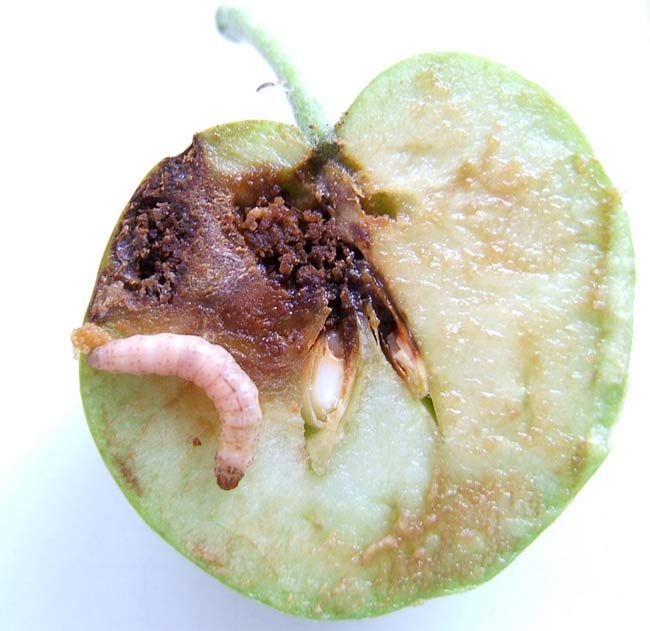Pests Thrive in Organic Apples

Pesky worms get stronger and more difficult to wipe out in organic apples, finds a new study, but the pests aren't really worms.
The mushy crawler hiding out inside your crisp apple is likely the codling moth caterpillar Cydia pomonella—a larval insect. Like butterflies, moths go through a life cycle that goes through stages from an egg to caterpillar (the larva) and ultimately the adult moth.
While the moth caterpillar infests organic and non-organic apples alike, the two types of farming rely on different forms of pest control. Rather than using chemical pesticides, organic apple growers typically use a pathogen known to infect insects, the codling moth granulovirus, to keep the apple munchers under control without harming the crops. This granulovirus belongs to a family of pathogens called baculovirus.
While scientists have documented resistance to chemical sprays, they didn't think pests developed such resistance to natural killers such as viruses, until now.
As reported in the Sept. 28 issue of the journal Science, a single gene in the codling moth caterpillar can make it 100,000 times less susceptible to the codling moth granulovirus.
The results could have large impacts as nearly 8,000 to 11,500 square miles (20,000 to 30,000 square kilometers) of crops worldwide get sprayed each year with baculoviruses.
Sabine Asser-Kaiser of the Agricultural Service Center of Rhineland-Palatinate in Germany and colleagues collected codling moths from 13 organic orchards in southwest Germany and ran lab tests, finding the resulting caterpillars could tolerate levels of the granulovirus more than 1,000 times higher than previous estimates.
Sign up for the Live Science daily newsletter now
Get the world’s most fascinating discoveries delivered straight to your inbox.
This resistance, they found, can skyrocket in following generations. The genes responsible for resisting the virus are passed from parents to offspring via a sex chromosome, the so-called Z chromosome.
In humans, the sex chromosomes are called X and Y, with XX females and XY males. The reverse occurs in caterpillar moths, whose chromosomes are called Z and W, with ZW females and ZZ males.
A female caterpillar with only a single copy of the gene is nonetheless 100,000 times better protected against the virus than other females without the protective gene. Males with two copies of the protective gene are even more resistant.
Male caterpillars born from the mating of a resistant female and a susceptible male (without the resistance gene) could tolerate low levels of the granulovirus.
The gene allows the caterpillars to stay one step ahead of the farmers trying to eradicate them.
"If the apple grower increases virus applications to try to control the damage caused by the resistant population, the opposite results," said study team member David Heckel of the Max Planck Institute for Chemical Ecology in Germany. "Selection for resistance accelerates and the frequency of the gene on the Z chromosome increases even faster in the population."
- Take Our Nutrition Quiz
- Top 10 Mysterious Diseases
- Good Foods Gone Bad
Jeanna Bryner is managing editor of Scientific American. Previously she was editor in chief of Live Science and, prior to that, an editor at Scholastic's Science World magazine. Bryner has an English degree from Salisbury University, a master's degree in biogeochemistry and environmental sciences from the University of Maryland and a graduate science journalism degree from New York University. She has worked as a biologist in Florida, where she monitored wetlands and did field surveys for endangered species, including the gorgeous Florida Scrub Jay. She also received an ocean sciences journalism fellowship from the Woods Hole Oceanographic Institution. She is a firm believer that science is for everyone and that just about everything can be viewed through the lens of science.











